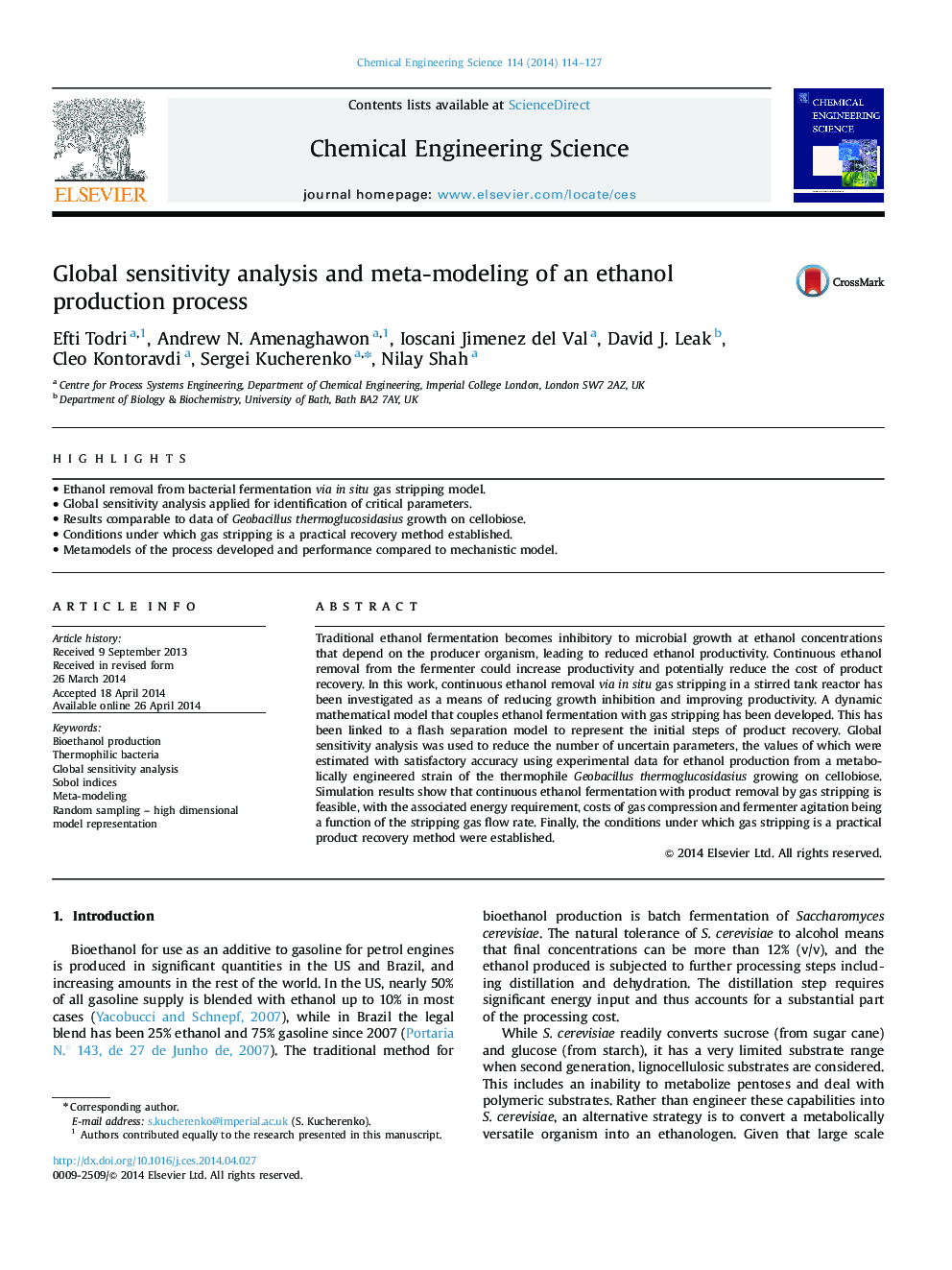| Article ID | Journal | Published Year | Pages | File Type |
|---|---|---|---|---|
| 6591247 | Chemical Engineering Science | 2014 | 14 Pages |
Abstract
Traditional ethanol fermentation becomes inhibitory to microbial growth at ethanol concentrations that depend on the producer organism, leading to reduced ethanol productivity. Continuous ethanol removal from the fermenter could increase productivity and potentially reduce the cost of product recovery. In this work, continuous ethanol removal via in situ gas stripping in a stirred tank reactor has been investigated as a means of reducing growth inhibition and improving productivity. A dynamic mathematical model that couples ethanol fermentation with gas stripping has been developed. This has been linked to a flash separation model to represent the initial steps of product recovery. Global sensitivity analysis was used to reduce the number of uncertain parameters, the values of which were estimated with satisfactory accuracy using experimental data for ethanol production from a metabolically engineered strain of the thermophile Geobacillus thermoglucosidasius growing on cellobiose. Simulation results show that continuous ethanol fermentation with product removal by gas stripping is feasible, with the associated energy requirement, costs of gas compression and fermenter agitation being a function of the stripping gas flow rate. Finally, the conditions under which gas stripping is a practical product recovery method were established.
Keywords
Related Topics
Physical Sciences and Engineering
Chemical Engineering
Chemical Engineering (General)
Authors
Efti Todri, Andrew N. Amenaghawon, Ioscani Jimenez del Val, David J. Leak, Cleo Kontoravdi, Sergei Kucherenko, Nilay Shah,
